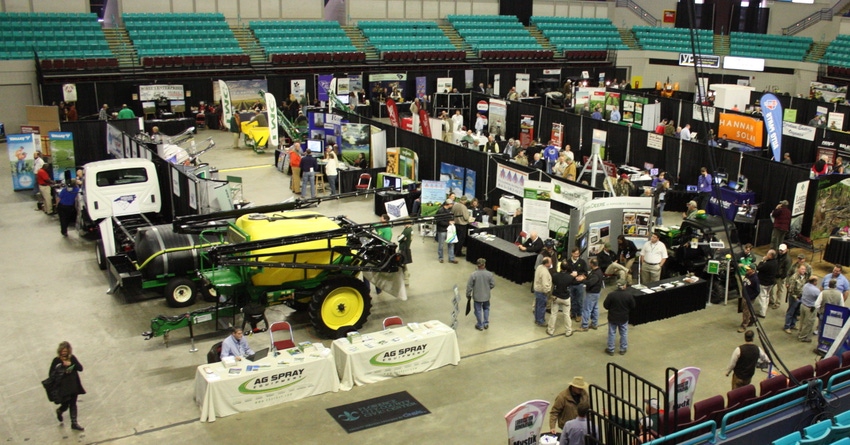February 11, 2015

Farmers from the Carolinas and Georgia turned out to learn about the latest farm technology at the SC AgriBiz and Farm Expo held at the Florence Civic Center Jan. 14 and 15. But some farmers at the Expo were facing a more basic choice: What could they plant in 2015 to make money?
“This was the Expo’s third year, and we didn’t see any falloff in either attendance or farmer interest,” says Jody Martin, executive director of the Expo. “The innovative side of current agriculture was well represented in our exhibits, and it gave farmers an excellent opportunity to interact and get caught up.”
Martin estimated that attendance was somewhere in the 3,000 range, which would be roughly 25 percent above the 2014 Expo. A conversion to a two-day event rather than the original three doesn’t seem to have affected attendance, and the format will be followed again in 2016, when the dates will be Jan. 13 and 14.
Planting options
Steve Squires of Hemingway, S.C., grew 500 acres of flue-cured tobacco last year and is hoping to grow that much again. But when he visited the Expo, the contracting situation had him a little pessimistic.
“From what I hear, there might be an industry cut of 10 percent to 30 percent,” he says.
The outlook for contracts for his other major crop, peanuts, wasn’t promising in mid January either. He hadn’t gotten any contract offers on his peanuts as of the Expo. He had heard of a $400 contract being offered in Georgia, but that wouldn’t be enough.
“We would need at least $525 a ton if we can get a one and a half ton yield,” he said.
This year his varieties are Bailey and NCV11, both of the Virginia type.
Peanuts up in the Pee Dee
The number of acres of peanuts South Carolina farmers will plant was still very much in question at the Expo since there had been little contracting activity prior to mid January. But Marianne Copelan, marketing specialist for the South Carolina Peanut Board, said there continued to be a lot of interest in peanuts in the state.
“We went from 79,000 acres in 2013 to 107,000 acres in 2014,” she said. A further increase in 2015 is certainly possible if the demand warrants it.
All of the increase has been in the coastal plain, she said, and most of it has been in the Pee Dee region around Florence. The soils are generally deep and sandy with clay underneath.
The number of peanut growers in South Carolina has increased by about a third in the last three years, says Copelan. “We have over 425 growers now, up over a 100 since 2011.”
There might be at least one more in 2015. Bill Mouzon produces vegetables on 15 acres on a farm near Kingstree, S.C., including watermelons, cabbage, collards, broccoli, beans and peas. He sells some of his products to wholesalers and some direct to consumers from a farm shed.
Now, he is looking to broaden his offerings, and he visited the South Carolina Peanut Board booth in hopes of learning if peanuts might be a good way to so it.
He came away thinking that boiling peanuts might be a good fit in his operation.
“I believe I will get into planting peanuts, but it may be 2016 before I get it done,” he told Southeast Farm Press. Before he can plant a crop, he will have to find a way to get the peanuts harvested.
Another factor working in favor of increased plantings of peanuts in South Carolina could be the likely reduction of flue-cured tobacco, which like peanuts is grown on sandy soils.
Nationally, peanut growers produced 1.354 million acres in 2014, up a little from the year before, with total volume of 5.2 billion pounds.
Agritourism growing
In a presentation on agritourism, Martin Eubanks, assistant South Carolina commissioner of agriculture, said the state department of agriculture sees a tremendous opportunity for agritourisn to grow with the diversity of the state.
“The opportunity is there, and we haven’t reached its full potential,” said Eubanks. “When you reach that potential, agritourism brings people to the farm. It brings further dollars to our state that will roll over in our state’s economy. It’s all positive for the State of South Carolina.”
Agritourism is all about bringing people to the farm and giving them the farm experience, he said. “Today’s consumers want their children and grandchildren to have that experience.”
About the Author(s)
You May Also Like




